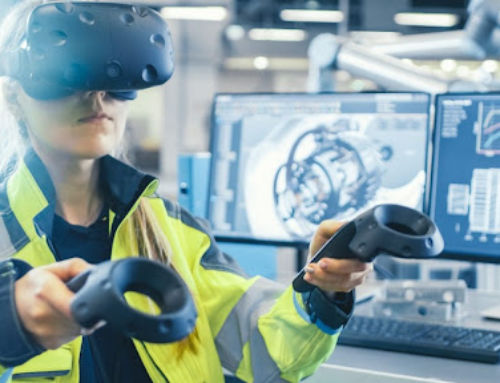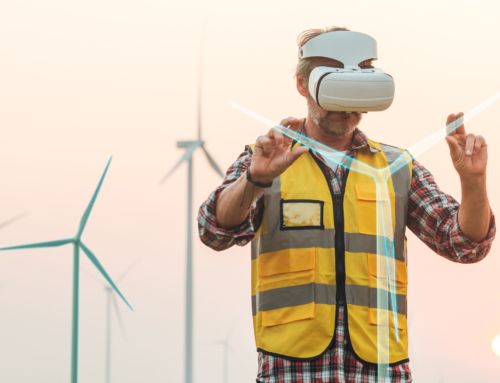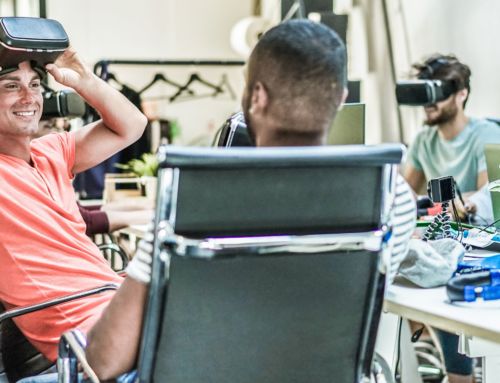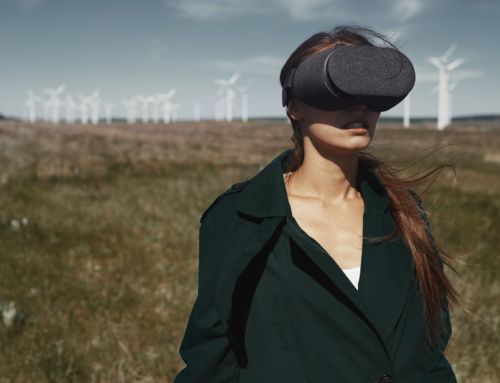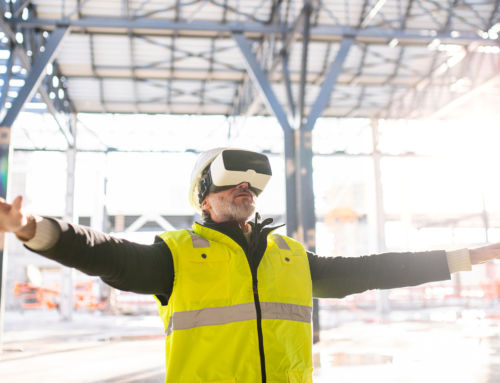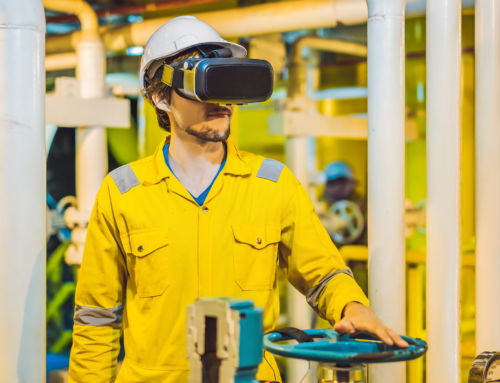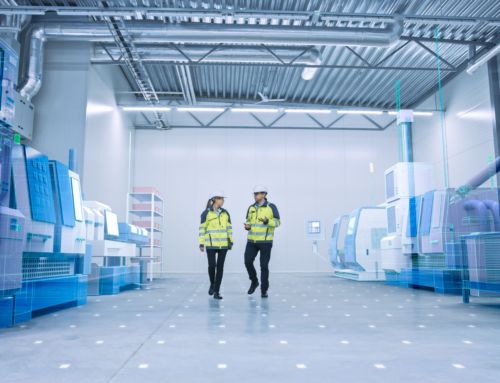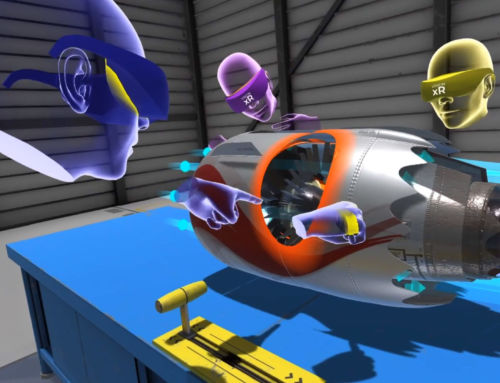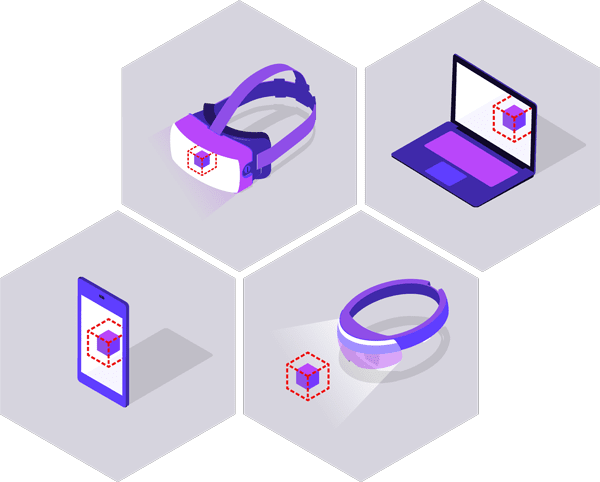As many of us are feeling Zoom fatigue after months of remote business meetings have become our new normal, can virtual reality provide a viable alternative to video conferencing, helping to keep us engaged and connected with co-workers, industry contacts and customers alike?

The Rise of Online Meetings
In 2020, the use of online meetings has supported a revolutionary shift in everyday business practices, supporting communications and remote working throughout Covid pandemic lockdowns. But video conferencing isn’t a new innovation. With its roots in post-war developments, it went mainstream in the 2000s as webcams became a ubiquitous part of modern computers and laptops, coupled with the introduction of 3G leading to improved internet connections.
Online meetings are now a regular part of many of our professional lives and a crucial tool in the modern workplace. With the widespread availability of user friendly, affordable and reliable platforms from Skype, GoTo Meeting, Zoom and beyond, video conferencing offers a fantastic way to connect colleagues based across various workplaces, as well as those working remotely. While virtual meetings have helped organisations to connect across multiple locations, making day-to-day operations work more efficiently, they also contribute to businesses functioning in a more environmentally friendly way by reducing unnecessary staff travel.
Immersive technologies have the potential to build on these benefits and take virtual business meetings to the next level.

The Benefits of Using VR for Business Meetings
Virtual reality platforms such as Future Visual’s VISIONxR(™) offer collaborative digital spaces for remote business meetings to take place in innovative and productive ways. There are tangible benefits to introducing virtual reality into your business toolbox including:
- An improved people-centred experience
Traditional online meetings lock participants into a 2D screen, creating an artificial and passive environment that has more in common with the TV than the boardroom. Virtual reality has the power to bring meetings back into a 3D space, giving attendees freedom of movement and replicating more natural human interactions. By adding 3D interactivity, attendees can act and react as they would in a traditional meeting. It allows them to move around and look where they want to, as well as picking up on non-verbal signals and gestures.
- Engaging collaborative tools
Virtual reality and 3D modelling are a match made in heaven. As well as bringing digital versions of colleagues to life, digital content such as collaborative documents and models can also be introduced into VR business meetings. Meetings can become more visually appealing and action focused, as content such as 3D models can be introduced and scrutinised in detail, and real time changes can be made in an instant.
- Creating spaces to match the meeting
In virtual reality the sky is literally the limit for a meeting space. Whether you’re wanting to recreate a traditional boardroom, or spark attendees’ creative potential through meeting in a more unusual place, VR platforms give you the chance to create meeting spaces that reflect and enhance the tone and agenda of any meeting.
- Improving meeting productivity
A key benefit of virtual reality is it takes you completely out of your physical space, helping to minimise every day interruptions and increase the effectiveness of the meeting. By using a headset and headphones to enter a virtual meeting space, attendees are able to fully concentrate on the matter in hand as they are free from distractions such as incoming emails, doorbells ringing or other people in the physical space.

The Future of Virtual Reality Business Meetings
The Covid pandemic has accelerated the uptake of remote working out of necessity, rather than design. This in turn has led companies to seek new ways to improve operations during these challenging times, which can potentially offer a blueprint for future working practices.
Ever-improving innovations technology means virtual reality is becoming a viable alternative to online meetings. With the launch of Oculus Quest 2 in October 2020, VR hardware is becoming more affordable and accessible, coupled with advances in software meaning the virtual space is more realistic and responsive. The rollout of 5G also means that VR will become a more reliable communications tool, significantly improving the quality of shared experiences, as it will allow high resolution and realistic digital content to be easily accessed.
Virtual reality-based solutions, such as their collaboration platform VISIONxR(™) have the potential to keep colleagues, business stakeholders and clients connected in new and exciting ways, helping businesses to stay ahead of the game by offering unique and visually engaging ways to meet and work together – both now and in the future.
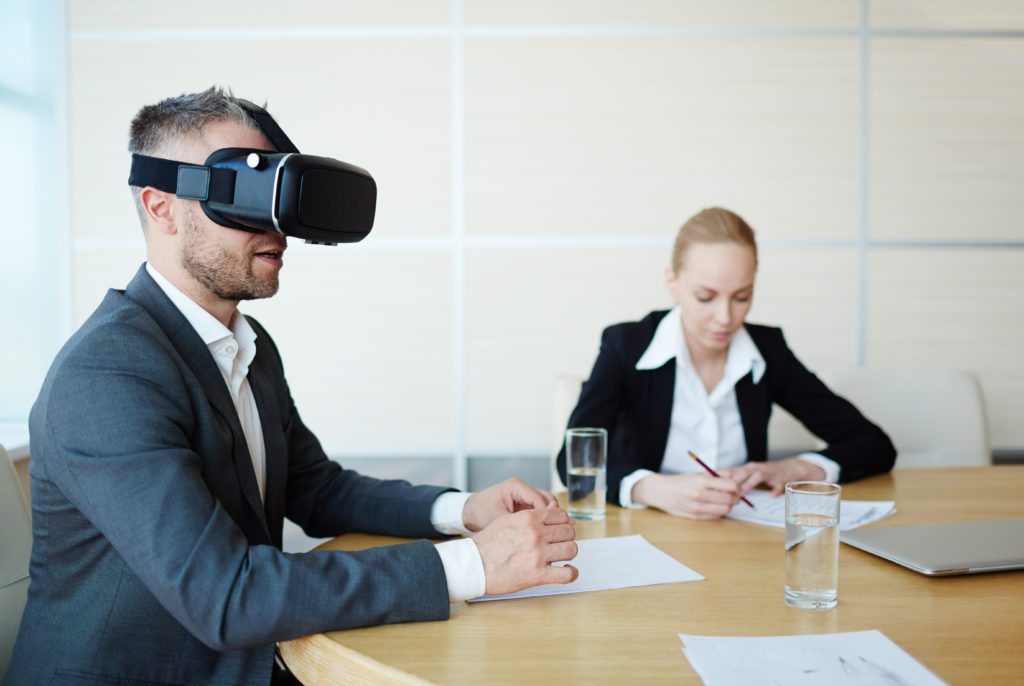
Introducing Virtual Reality into your Business
Interested in finding out more about how virtual reality could benefit your business? Future Visual is here to help! Contact us today to start your immersive journey by booking a demo here.
As many of us are feeling Zoom fatigue after months of remote business meetings have become our new normal, can virtual reality provide a viable alternative to video conferencing, helping to keep us engaged and connected with co-workers, industry contacts and customers alike?

The Rise of Online Meetings
In 2020, the use of online meetings has supported a revolutionary shift in everyday business practices, supporting communications and remote working throughout Covid pandemic lockdowns. But video conferencing isn’t a new innovation. With its roots in post-war developments, it went mainstream in the 2000s as webcams became a ubiquitous part of modern computers and laptops, coupled with the introduction of 3G leading to improved internet connections.
Online meetings are now a regular part of many of our professional lives and a crucial tool in the modern workplace. With the widespread availability of user friendly, affordable and reliable platforms from Skype, GoTo Meeting, Zoom and beyond, video conferencing offers a fantastic way to connect colleagues based across various workplaces, as well as those working remotely. While virtual meetings have helped organisations to connect across multiple locations, making day-to-day operations work more efficiently, they also contribute to businesses functioning in a more environmentally friendly way by reducing unnecessary staff travel.
Immersive technologies have the potential to build on these benefits and take virtual business meetings to the next level.

The Benefits of Using VR for Business Meetings
Virtual reality platforms such as Future Visual’s VISIONxR(™) offer collaborative digital spaces for remote business meetings to take place in innovative and productive ways. There are tangible benefits to introducing virtual reality into your business toolbox including:
- An improved people-centred experience
Traditional online meetings lock participants into a 2D screen, creating an artificial and passive environment that has more in common with the TV than the boardroom. Virtual reality has the power to bring meetings back into a 3D space, giving attendees freedom of movement and replicating more natural human interactions. By adding 3D interactivity, attendees can act and react as they would in a traditional meeting. It allows them to move around and look where they want to, as well as picking up on non-verbal signals and gestures.
- Engaging collaborative tools
Virtual reality and 3D modelling are a match made in heaven. As well as bringing digital versions of colleagues to life, digital content such as collaborative documents and models can also be introduced into VR business meetings. Meetings can become more visually appealing and action focused, as content such as 3D models can be introduced and scrutinised in detail, and real time changes can be made in an instant.
- Creating spaces to match the meeting
In virtual reality the sky is literally the limit for a meeting space. Whether you’re wanting to recreate a traditional boardroom, or spark attendees’ creative potential through meeting in a more unusual place, VR platforms give you the chance to create meeting spaces that reflect and enhance the tone and agenda of any meeting.
- Improving meeting productivity
A key benefit of virtual reality is it takes you completely out of your physical space, helping to minimise every day interruptions and increase the effectiveness of the meeting. By using a headset and headphones to enter a virtual meeting space, attendees are able to fully concentrate on the matter in hand as they are free from distractions such as incoming emails, doorbells ringing or other people in the physical space.

The Future of Virtual Reality Business Meetings
The Covid pandemic has accelerated the uptake of remote working out of necessity, rather than design. This in turn has led companies to seek new ways to improve operations during these challenging times, which can potentially offer a blueprint for future working practices.
Ever-improving innovations technology means virtual reality is becoming a viable alternative to online meetings. With the launch of Oculus Quest 2 in October 2020, VR hardware is becoming more affordable and accessible, coupled with advances in software meaning the virtual space is more realistic and responsive. The rollout of 5G also means that VR will become a more reliable communications tool, significantly improving the quality of shared experiences, as it will allow high resolution and realistic digital content to be easily accessed.
Virtual reality-based solutions, such as their collaboration platform VISIONxR(™) have the potential to keep colleagues, business stakeholders and clients connected in new and exciting ways, helping businesses to stay ahead of the game by offering unique and visually engaging ways to meet and work together – both now and in the future.

Introducing Virtual Reality into your Business
Interested in finding out more about how virtual reality could benefit your business? Future Visual is here to help! Contact us today to start your immersive journey by booking a demo here.







